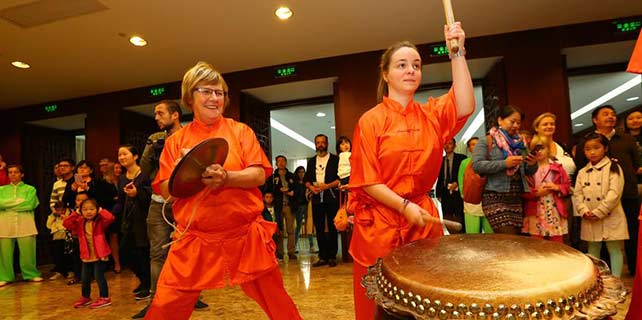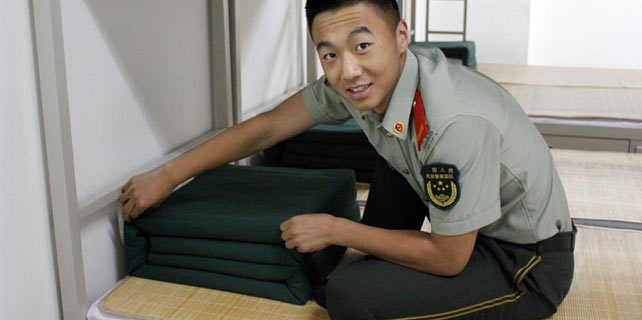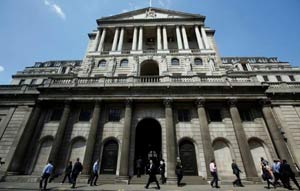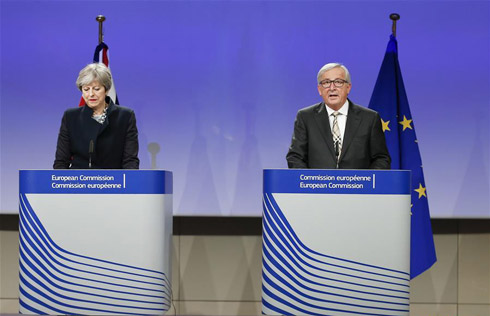China reduces foreign exchange risk reserve ratio to zero
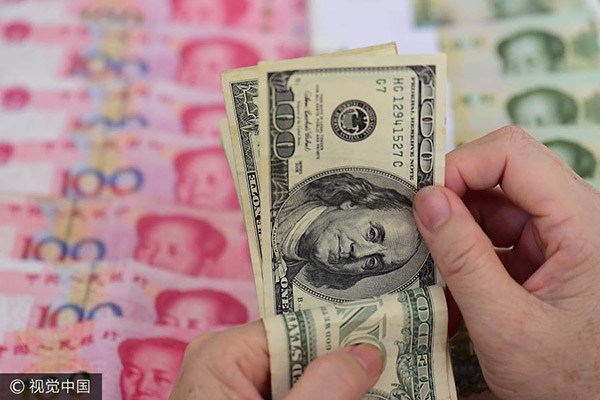 |
|
An employee counts renminbi and dollars at a bank in Qionghai, Hainan province. [Photo/VCG] |
BEIJING - China's central bank has scrapped reserve requirements of 20 percent for financial institutions settling foreign exchange forward yuan positions, an official said Monday.
The foreign exchange risk reserve ratio was reduced to zero, according to Sun Guofeng, head of the financial research institute affiliated to the People's Bank of China (PBOC).
Meanwhile, the PBOC's substantial supervision on the reserves put aside by foreign financial institutions was also loosened.
The adjustment was made as the current market environment has changed greatly, which means counter-cyclical macro-prudential policies have given way to a neutral monetary policy, Sun said.
Sun said interest rates are primarily determined by economic fundamentals.
While remaining stable against a basket of currencies, the yuan has been on an upward trajectory against the US dollar this year due to the weakening greenback and steady expansion of the Chinese economy.
It is widely believed that the renminbi interest rate has fully reflected China's economic fundamentals and is broadly keeping at a reasonable equilibrium, Sun said.
"While the renminbi interest rate moving toward equilibrium, market expectations tend to be rational, cross-border capital flows and foreign exchange supply and demand become more balanced," said Sun.
A neutral monetary policy could improve liquidity and better serve the real economy, Sun added.
The central parity rate of the Chinese currency, the yuan, strengthened for the 11th consecutive working day to a fresh high against the US dollar Monday.
The central parity rate of the yuan strengthened 35 basis points to 6.4997 against the US dollar, breaking the psychologically important 6.5 barrier for the first time since May 2016, according to the China Foreign Exchange Trade System. It is the longest continuous daily rising sequence since 2005.
"The appreciation of the renminbi against the US dollar this year has been driven by a combination of US dollar weakness, China's tighter management of capital outflows, reduced risk of large scale US-China trade war, and improved economic performance and market sentiment on China," said UBS economist Wang Tao in a research note.
China's economy expanded 6.9 percent in the first half, well above the target of around 6.5 percent for the year.
Its manufacturing activity expanded for the 13th consecutive month in August, providing fresh evidence of a firming economy.
Forex reserves rose for the seventh month in a row in August to $3.092 trillion, increasing $10.8 billion from a month earlier.
China has decided to pursue a "prudent and neutral" monetary policy in 2017, applying a full range of policy instruments to maintain basic stability in liquidity and hold interest rates at an appropriate level.








